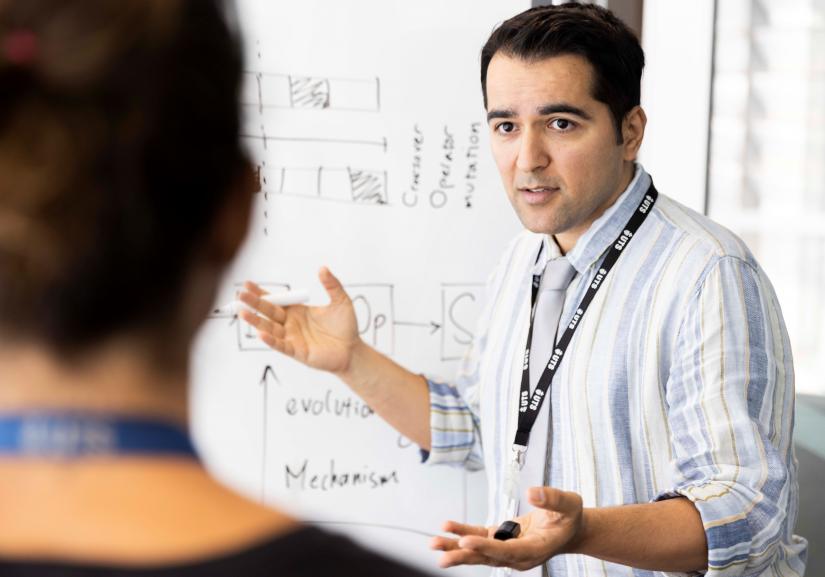The evolutionary theories of Charles Darwin have long helped biologists and social scientists explain how organisms develop and adapt to the world around us. Now, they’re the inspiration for new techniques in big data and analytics.
Genetic programming is a powerful machine learning method that evolves algorithms to solve complex data problems. It recently caused a stir in AI circles by outperforming more traditional deep learning models in a problem-solving video gaming trial, the modern-day equivalent of a robotic chess match.
Professor Gandomi is a research leader in the UTS Data Science Institute and is using a $400,000 Discovery Early Career Researcher Award (DECRA) from the Australian Research Council to develop a new genetic programming method.
“Most machine learning techniques have a predefined and limited structure, but genetic programming has a unique way of solving problems. It builds a model from scratch, using evolution to find the different elements that work to build a new whole. That gives it unlimited potential,” he said.
“Instead of seeking a single solution to a problem, genetic programs create a population of solutions. These then exchange information within that population through several generations to ultimately end up with a better solution.”
He will use his DECRA to develop new genetic programming by coupling it with information theory that could help businesses and governments to evolve huge datasets into specific and actionable knowledge across a wide range of data-intensive applications including smart cities and the internet of things.
He is also developing a new concept called ‘Alpha’ programs.
“Here we’re focusing on each solution at the genetic level and have a way of tracking these information genes through the generations. That way we can borrow the best genes from different solutions to create the best possible solutions,” he said.
“It’s a Frankenstein-like process. We create an individual which borrows the best features from the others. It’s almost like a taking the best eye from someone and strongest arm from another, to come up with the best possible athlete.”
It's a Frankenstein-like process ... almost like a taking the best eye from someone and strongest arm from another, to come up with the best possible athlete.
Professor Amir H Gandomi
Professor Gandomi has a background in civil engineering in the United States and was drawn into the world of data science during his postgraduate study by the elegant solutions that evolutionary computation provided.
This passion took him to Michigan State University, an unlikely epicentre of the emerging field of evolutionary computation, where he worked with leaders in the field such as Professors Erik Goodman, Kalyanmoy Deb, and Wolfgang Banzhaf.
He also worked there as part of a group based in NASA’s Glenn Research Center focussed on machine learning and engineering solutions inspired by nature.
“They worked on some fascinating projects including seal-inspired aerodynamic designs or snake- or fish-inspired sensors. It was great to see so many innovations inspired by animals and nature,” Professor Gandomi said.
He has since taken up subsequent posts at the Stevens Institute of Technology, located across from Manhattan, and since 2019 at another university known for its strength in data science, UTS.
Throughout these, Professor Gandomi has applied the inspiration from natural selection in his groundbreaking work in genetic programming.
“That’s how nature works – it solves all its problems through evolution,” he said. “We’re trying to do the same, using evolutionary algorithms to solve the complex problems. We’re always trying to improve our solutions, just like in nature.”
Researcher
-
Professor, Data Science Institute


